
How To Enclose a Patio
Sitting on the patio is a great way to spend warm summer nights. But what if you could enjoy your outdoor living space even when weather conditions are less than ideal?
Enclosing a patio might sound like a huge undertaking but can be surprisingly simple if you know the right way to get the job done.
Whether you’re starting from scratch or already have the luxury of a covered patio in your backyard, keep reading for the best tips on how to enclose a patio!
5 Types of Temporary and Permanent Patio Enclosures
1. Pop-Up Canopy
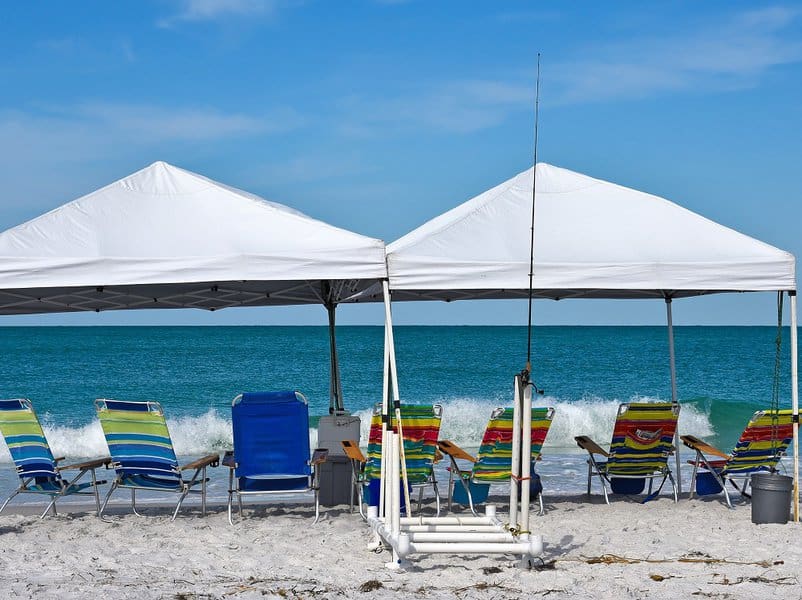
To transform a patio into an enclosed space with zero commitment, a pop-up canopy is by far the best option. This temporary enclosure is a large tent that encompasses the patio slab (or at least the majority of it). Keep in mind that some pop-up canopies are not true enclosures. Instead, their open sides more closely resemble a pergola.
For maximum versatility, look for a pop-up canopy with removable screens or shade panels. With this style, you can customize your patio to fit the weather with a moment’s notice.
2. Gazebo

While most permanent patio enclosures assume that the slab is connected to a house or other building, constructing a gazebo lets you enclose an outdoor space without an adjacent structure.
Gazebos come in many different styles and sizes. Gazebos themselves can be entirely enclosed, screened-in, or partially open.
3. Three-Season Porch
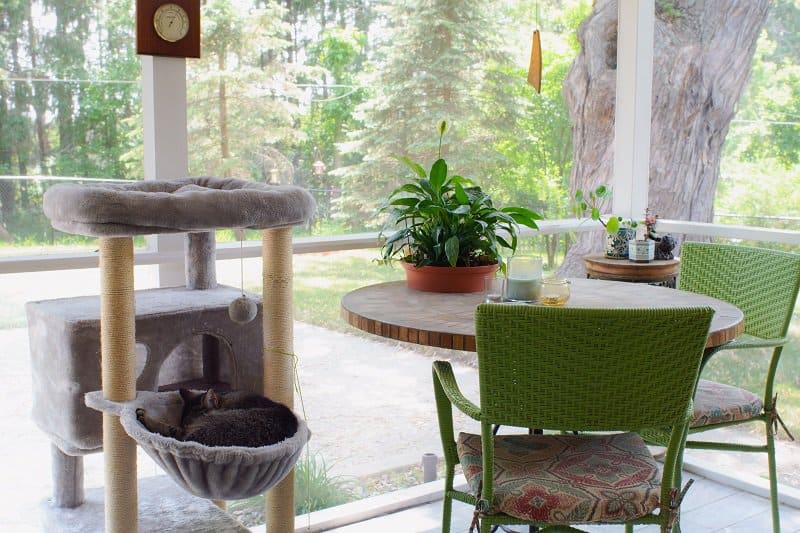
If a permanent patio enclosure is on the cards, consider investing in a three-season porch.
Three-season porches are basically fully enclosed rooms that lack modern heating or cooling. They offer the chance to extend your patio’s functionality further into the spring and fall (a must if you live somewhere with harsh winters).
Whether you’re starting completely from scratch or your patio is already covered, constructing a three-season porch is no small feat. But it’s almost guaranteed to add value to your home in the future.
4. Four-Season Porch
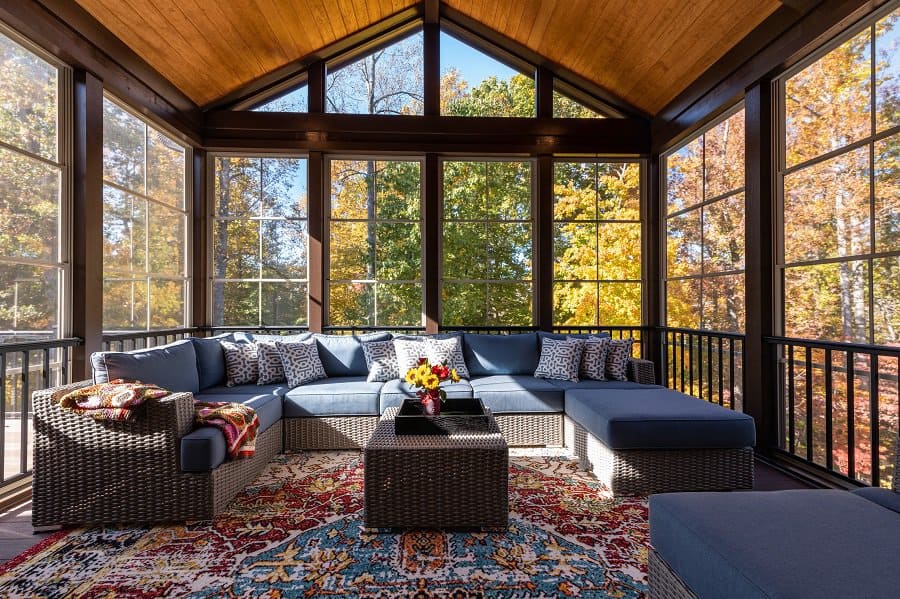
Looking to add more living space to your home? Then converting your patio into a four-season porch might be the best solution.
In practice, a four-season porch is not much different than any other room in your home. Four-season porches are fully heated and cooled, offering the same amenities as your standard living room or den.
Many homeowners opt to preserve the original atmosphere of their four-season porch by installing floor-to-ceiling windows or retractable walls. These features are totally optional but do make it easier to enjoy the outdoors during the warmer months.
5. Sunroom

Speaking of maintaining the outdoor qualities of an enclosed patio, a sunroom offers the best of both worlds.
A sunroom is a type of enclosed porch that is equipped with large (often wall-to-wall) windows. Many sunrooms also feature glass ceilings.
As the name implies, the main purpose of a sunroom is to let in as much natural light as possible. This type of room is perfect for raising plants of all varieties when the temperatures drop.
Sunrooms are often described as three or four-season. These terms refer to whether the space is temperature-controlled (four-season) or not (three-season).
How To Enclose a Patio
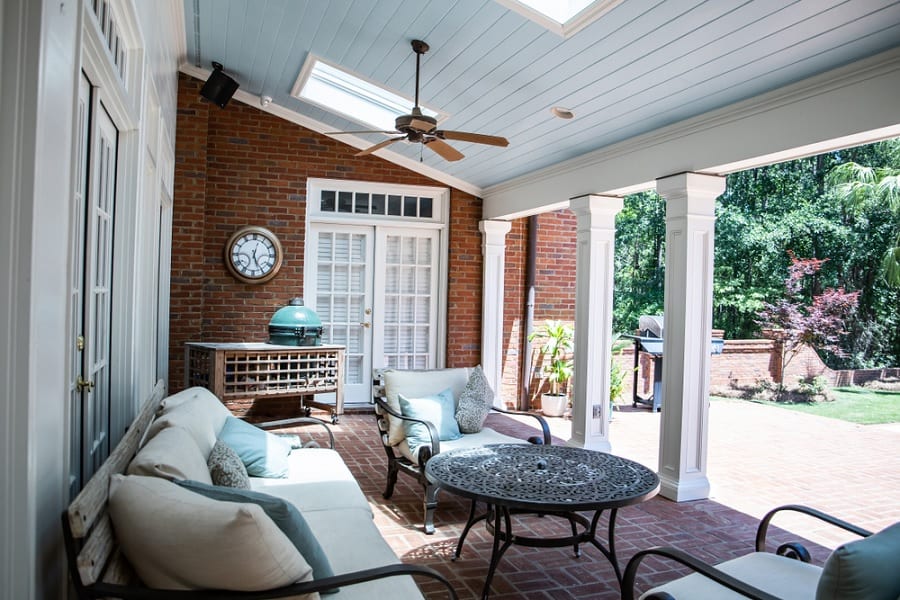
Adding temporary walls to a covered patio can be done in as little as an afternoon, depending on the exact method you choose. When it comes to constructing a permanent enclosure, a covered patio will often make the project faster and more affordable.
Here’s how to finish enclosing your patio for extra protection against bugs, the elements, and prying neighbors.
1. Curtains

When it comes to adding privacy, blocking harsh winds, or deterring insects, curtains are a surprisingly simple solution.
Opaque curtains can be hung from your porch eave or pergola. Be sure to select an outdoor-safe fabric that will not fade or degrade with exposure to sunlight and moisture.
One of the greatest assets of using curtains to enclose a patio is the sheer flexibility. You can tie the curtains back to open up the space and let in a gentle breeze. Or seal them shut with Velcro, magnets, or clasps to keep out even the most persistent pests.
2. Shades
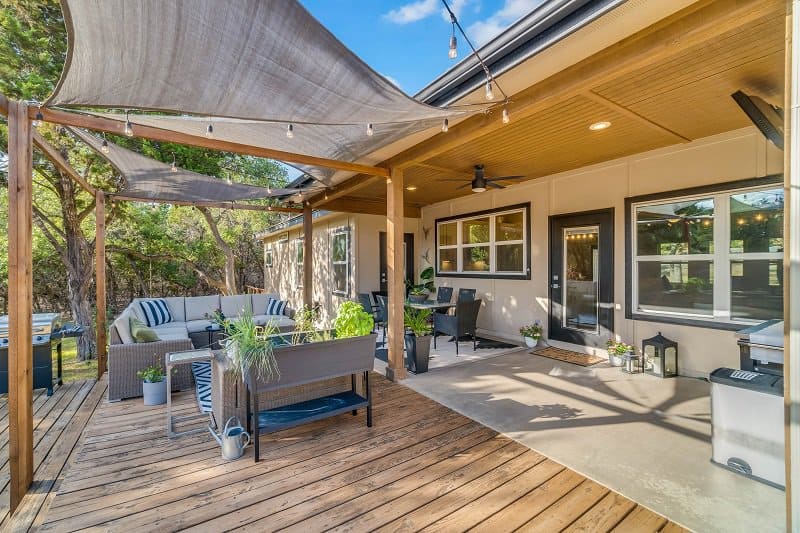
Similar to curtains, shades are extremely effective against the sun, wind, and nosy neighbors. Be sure to invest in shades that can be left outdoors.
Simply pull down the shades when you need a layer of insulation between you and the elements. Folding or roll-up shades can just as easily be retracted when you’re ready to enjoy the great outdoors once again.
If your patio is covered by a pergola, canvas shades can also be mounted to the ceiling for a bit of overhead protection. While this won’t provide the same shelter as a permanent roof, it’s a great temporary solution on particularly hot and sunny days.
3. Screens
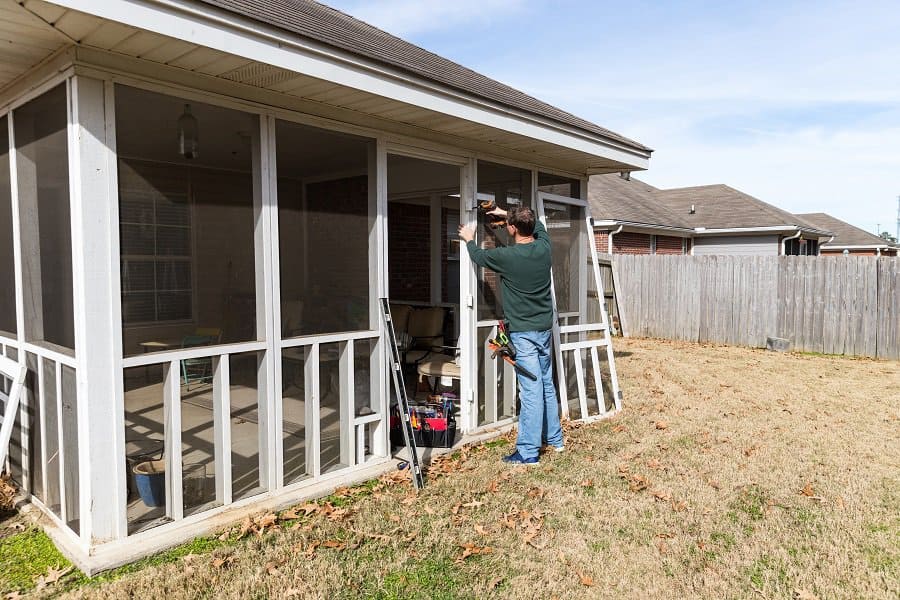
Are mosquitos and other biting insects the bane of your existence? Then screens will be much more effective than curtains or shades. When it comes to installing screens around a covered patio, there are two basic options to choose from.
The first is essentially a set of curtains made of screens. These often feature strong magnets to keep them closed when people are not coming in or out. The greatest part is that they can be installed without any real construction.
Or you can opt for a more permanent solution by enclosing your patio with screen windows. This option is more costly and typically requires the help of a professional. But you’ll be left with a well-protected patio that looks great year-round.
4. Glass
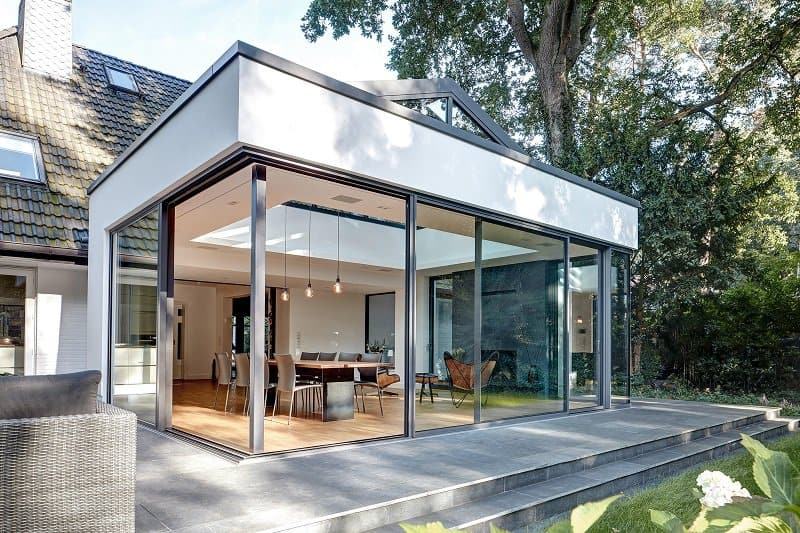
Screens don’t offer adequate protection from rain, wind, or snow in many climates. The next step up would be investing in glass windows for your patio enclosure.
The best thing is that you don’t need to choose between permanent screens or glass. Adding screens to existing patio enclosure windows is very straightforward. So you can still enjoy the openness of a traditional patio when the weather permits.
Again, installing glass windows around a patio is a big project. Supporting walls may be needed before you can even think about the windows themselves. But the final product will be 100% worth it.
Is Constructing a Permanent Patio Enclosure Worth It?

That depends. But in most cases, the answer is yes!
An enclosed patio lets you use your outdoor living space more often and for a greater part of the year. For many homeowners, this added value is more than enough justification for constructing a patio enclosure.
Even if your days in your current home are numbered, there may be a reason to invest in a gazebo or sunroom. It could increase your home’s future resale value.
Homes with quality outdoor living spaces are generally more desirable than their counterparts. Adding an enclosed patio to your home could—in the right market—help your home sell faster and for a higher amount!
Of course, building an enclosed patio costs money in and of itself. So while you’re unlikely to lose a significant amount on this investment, don’t expect to earn a profit either.
See more about - The Top 46 Patio Enclosure Ideas



